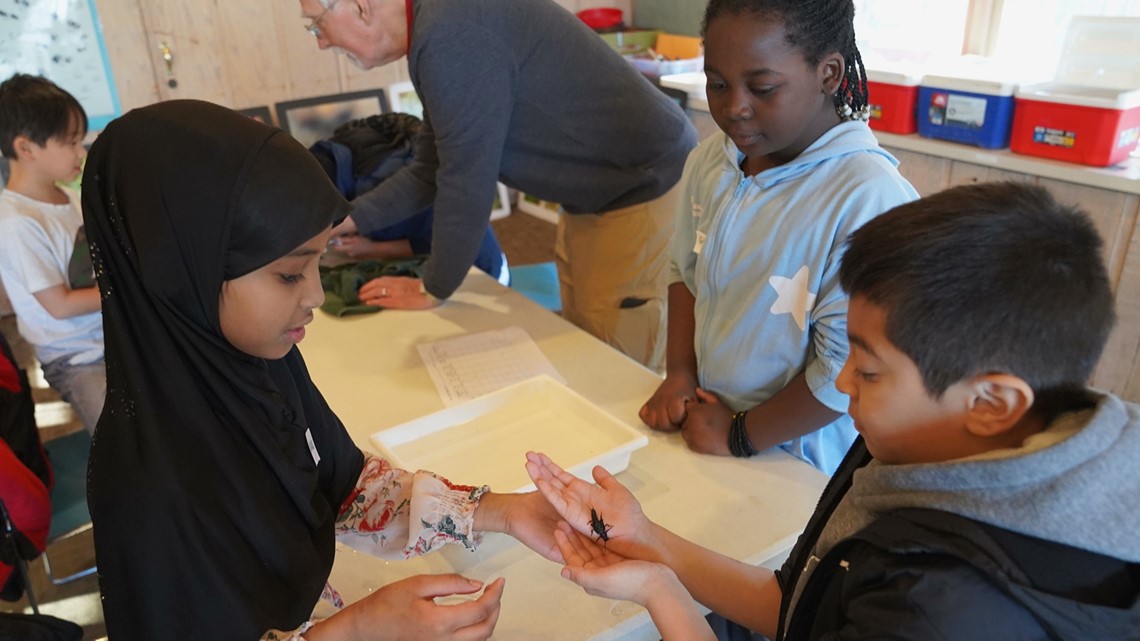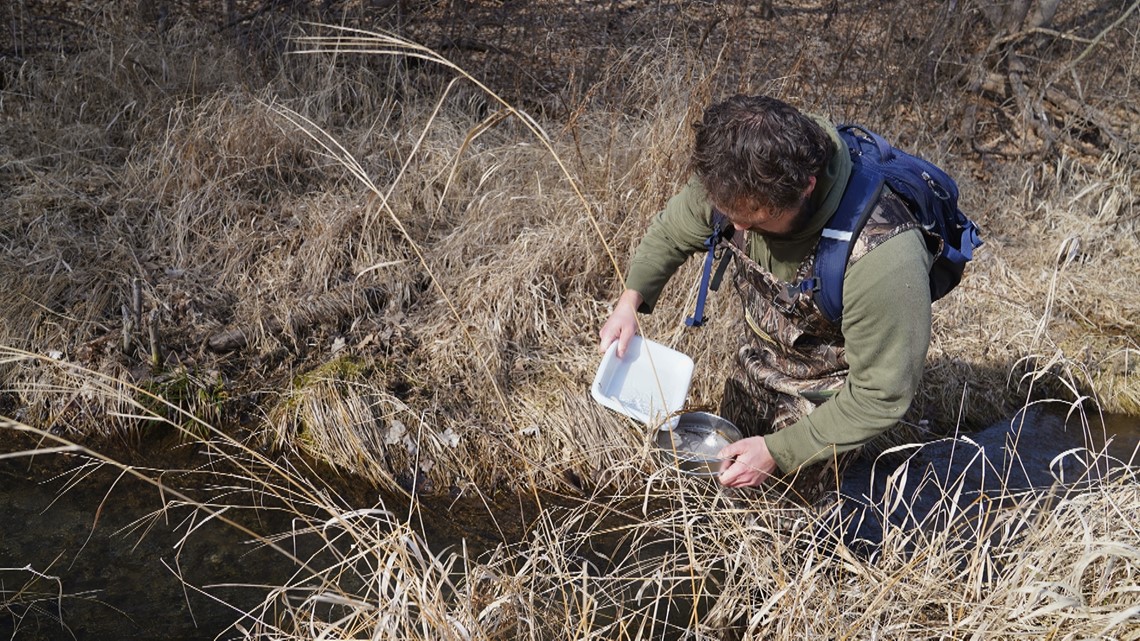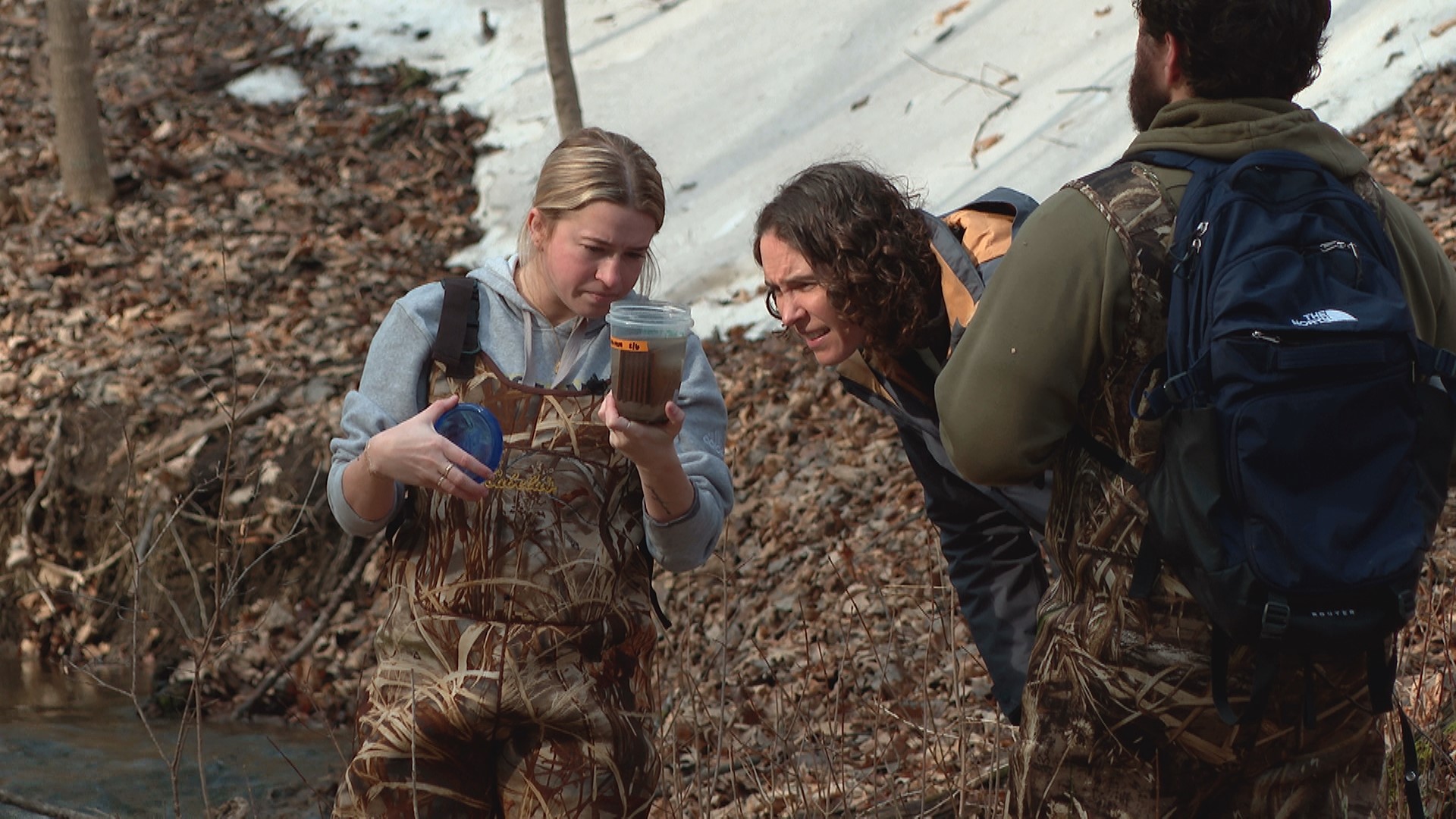AFTON, Minnesota — It's a warmer-than-usual winter day at Belwin Conservancy in Afton. A school bus full of kids from St. Paul's Battle Creek Elementary School pulls up to the site. The reason? To look at and touch bugs. Specifically, winter-active aquatic insects.
"Being not afraid to be able to pick it up... these insects are harmless to us. They're important in the stream to the whole stream ecosystem," said Dean Hansen, a semi-retired entomologist.
Third grader Nawaal starts off hesitant to touch a giant stonefly. Stoneflies live about two years underwater in the nymph stage before emerging from the water with wings.
"Stoneflies love to eat rotting leaves. Very important in the stream for getting rid of the dead vegetation," Hansen tells the class.
When Nawaal finally touches the stonefly, she says, "It's not scaring me no more."


Minnesota researchers are hoping to get more people curious about the insects that stay active during our state's coldest months.
Kids in third and fifth grade came out to Belwin at the end of January as part of outreach for the Bugs Below Zero project.
"Bugs Below Zero is an education outreach and research program trying to get people excited and interested about streams in Minnesota and what the role of insects and fish are in the overall stream food webs," explained Rebecca Swenson, associate professor at the University of Minnesota of science communication.
Bugs Below Zero is housed at the University of Minnesota and funded thanks to the Minnesota State Lottery through the Environment and Natural Resources Trust Fund.
For more than a decade, researchers have been uncovering the life-cycle dynamics of non-biting midges and their importance to trout. They're now ramping up their outreach programs around winter-active aquatic insects including stoneflies, mayflies, caddisflies, and non-biting midges which can survive below-zero temperatures.


"I feel like we always think that everything is sort of dead and not alive in the wintertime and we forget about the tiniest insects," Swenson said. "They actually play a really key role in the food stream web and they're like little protein bites for trout. So it's important to sort of pay attention to what's going on with our tiniest insects."
Entomologist Alyssa Anderson has been involved with the project for about a year.
"Working in the winter is pretty novel. There's not a lot of ecologists that are out in the field during this time of year. So that means there's a lot of questions that are not answered," Anderson said. "They just provide an essential service to our ecosystem and without some of these organisms... we don't know the cascading consequences that it might have on other organisms."
Anderson is an associate professor of biology at Southwest Minnesota State University in Marshall.
She and a few of her students have been doing fieldwork, collecting samples at streams at Camden State Park every two weeks. Students scoop samples out of the stream from a hester-dendy which is basically a "bug hotel."
"We put this fake rock in there so they can colonize it," said Claudia Lensing, a senior biology major at SMSU.


Typically, these winter bugs are easy to spot on snowbanks. But this has been a record-setting mild winter with very little snow.
"This winter has definitely been a different one. No snow, which is very unique for a large portion of the winter," Anderson said. "As far as how that's impacting the insects, we don't necessarily know how that will impact them in the long run. In the short term, we do know that they don't live as long during warmer temperatures. If they're not living as long, there's not as many in the stream for fish and other organisms that might be feeding upon them."
Lensing added, "I think it's really important on an ecological standpoint. It's good to be able to inform people the impact of climate change and everything like that to our local streams. So I think it's a really important thing to do."
Part of Bugs Below Zero's outreach is showing avid trout fishers, teachers and K-12 students how they can be involved in conservation and related research.
"For those fishermen, if those fish don't have the food sources to survive through a harsh time of year, that's going to have consequences on the abundance of fish and how those fish are growing and developing," Anderson said.
On the Bugs Below Zero website, it states, "Solutions to protect trout streams from climate change take a long time to develop and deploy, but the research group is working hard to understand how environmental issues are impacting our ecosystems."
They now want the public to get involved in helping them cover more ground. A citizen science project welcomes participants to identify and submit information on the aquatic insects they see near stream banks during the winter. Anderson said this work is tough to do without snow as the backdrop makes it much easier to spot. But their hopeful for more of these opportunities next winter. Those interested in learning more can find the information, here.
Watch more local news:
Watch the latest local news from the Twin Cities and across Minnesota in our YouTube playlist:

